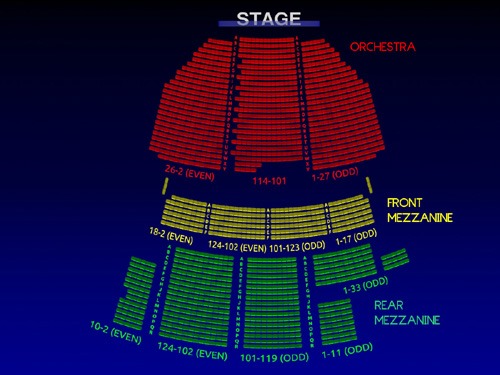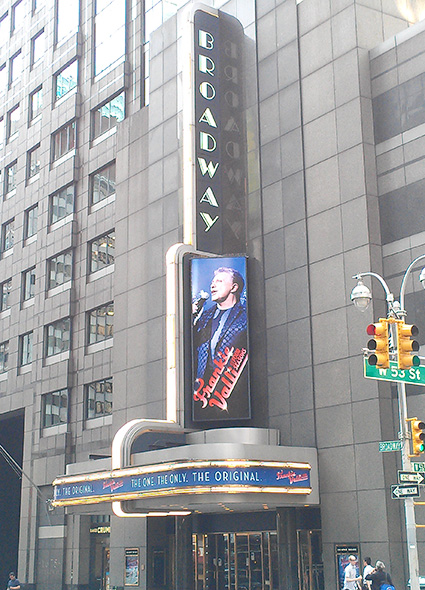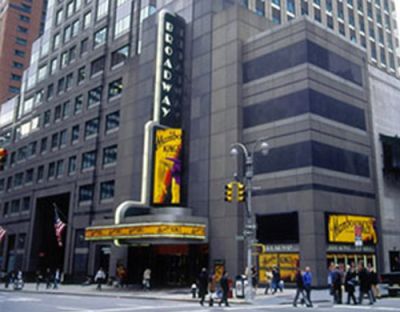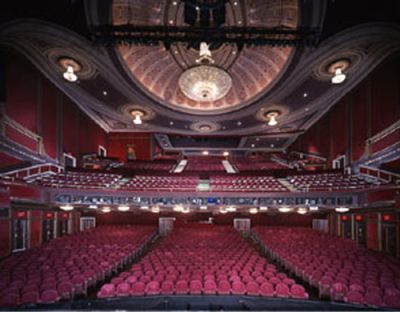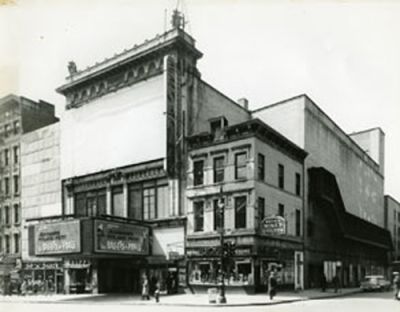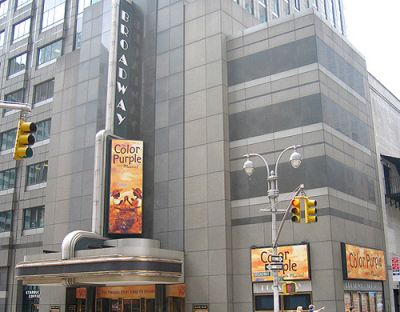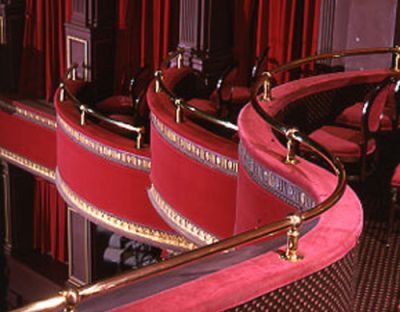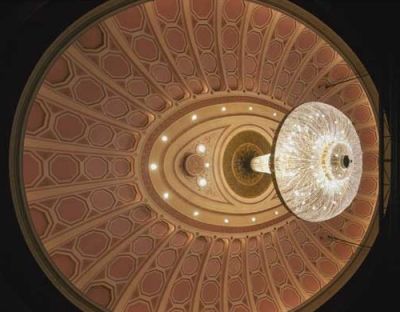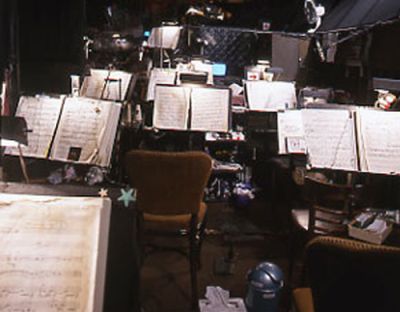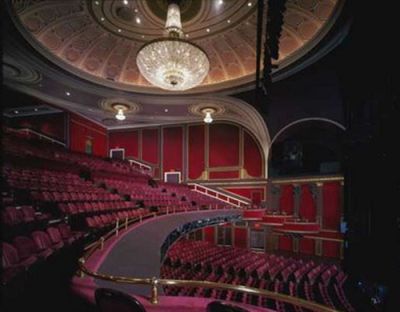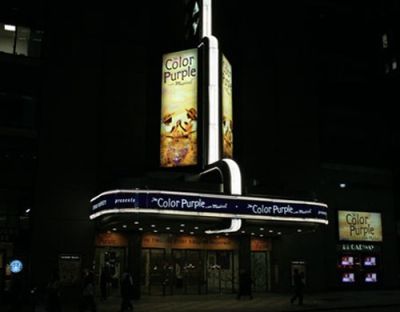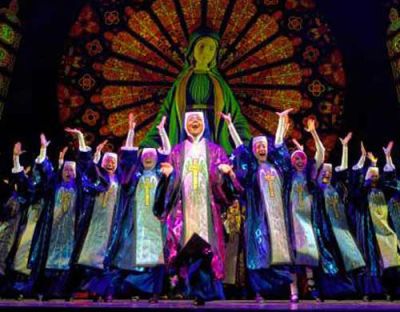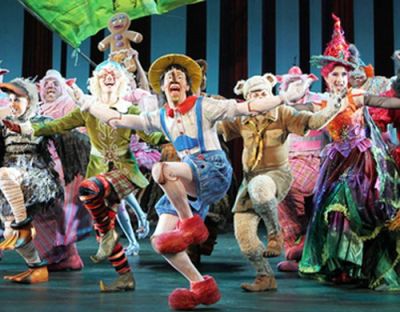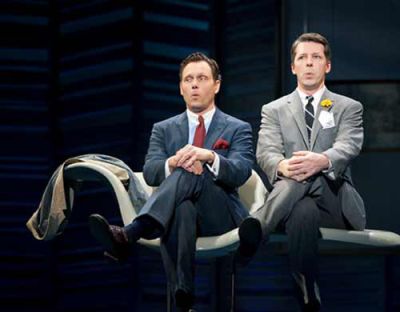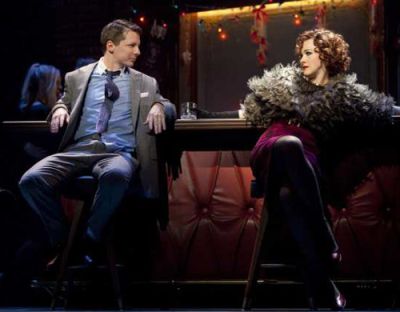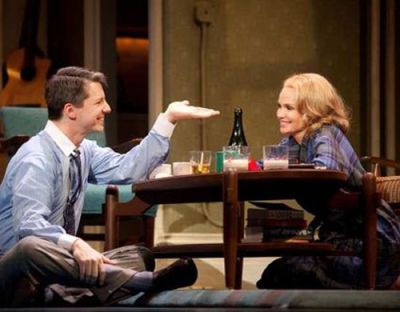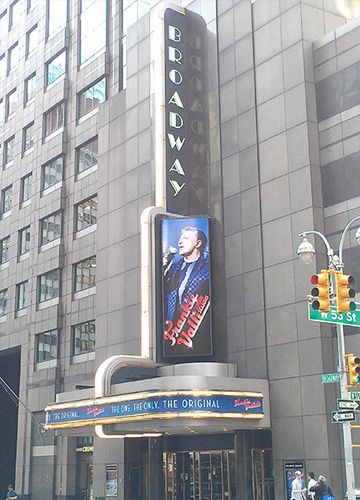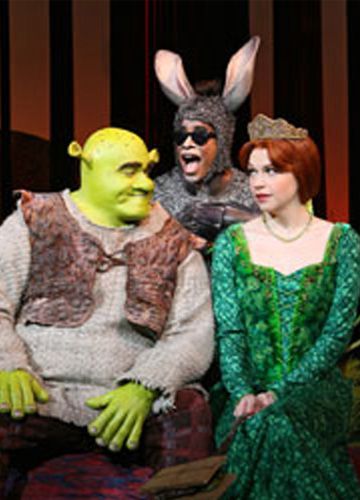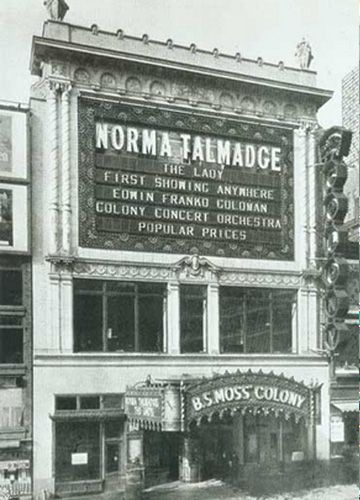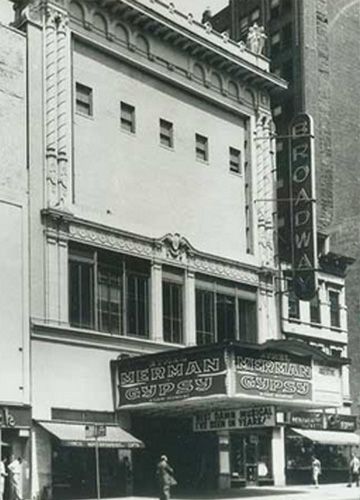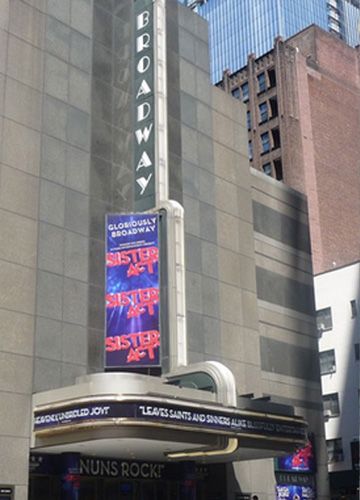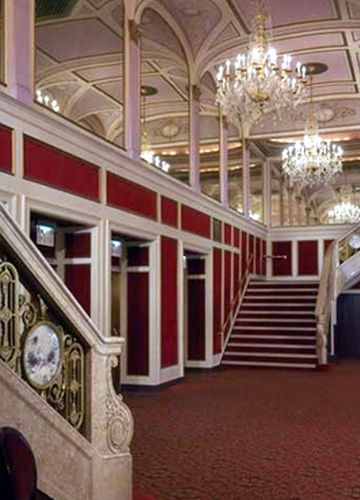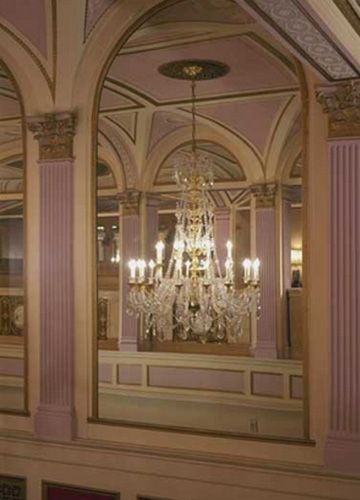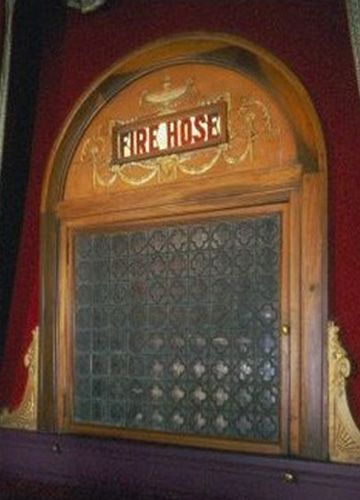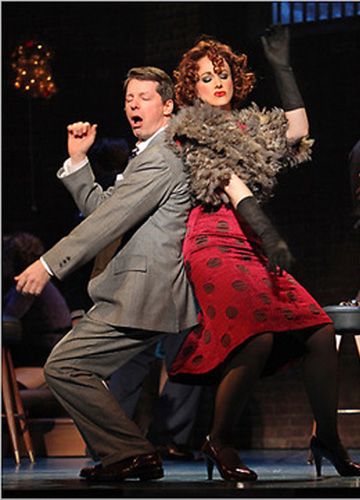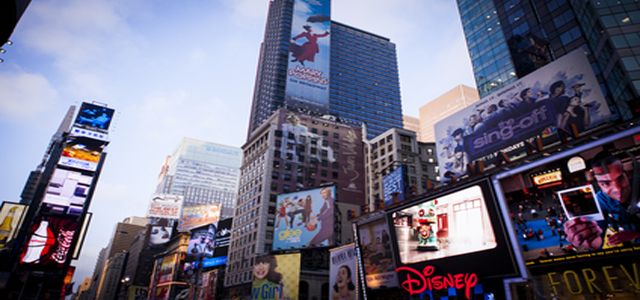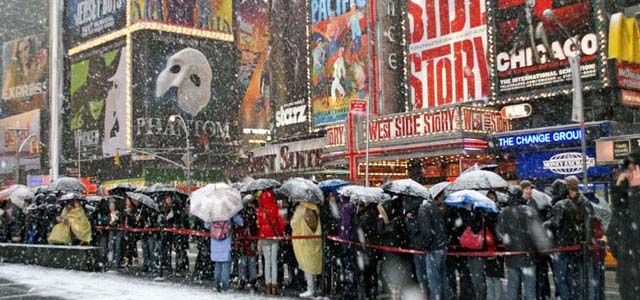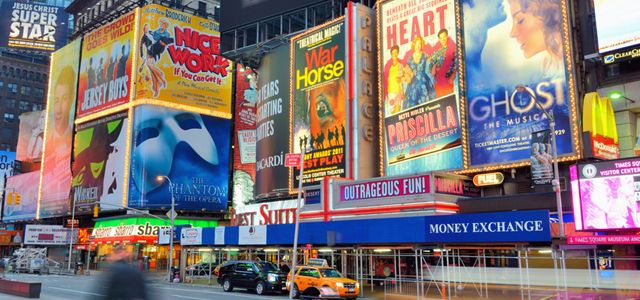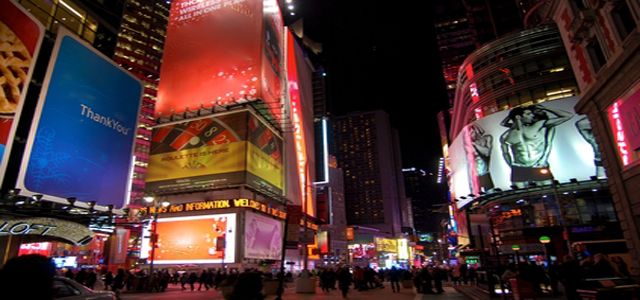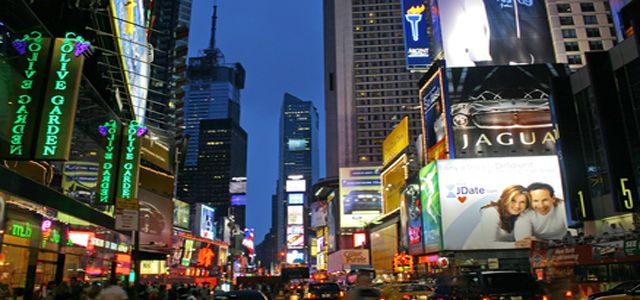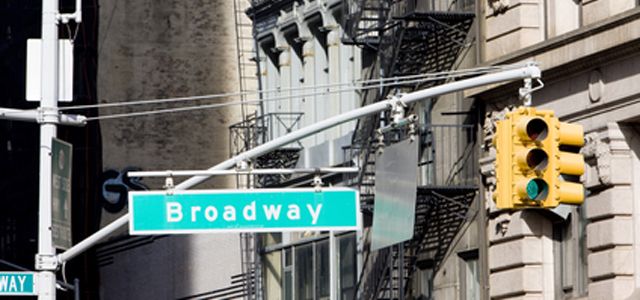The Broadway Theatre
On Christmas Day in 1924, the Broadway Theatre, which was designed by Eugene De Rosa for Benjamin S. Moss, an entrepreneur who managed a chain of movie houses that also presented vaudeville, opened. The Broadway was initially named the B.S. Moss’s Colony Theatre, and it is one of the few legitimate playhouses that was originally constructed as a movie house. Since 1924, the theatre has served many functions and been under many names. Before becoming a legitimate theatre with its current name on December 8, 1930, it was known as Universal’s Colony Theatre and Earl Carroll’s Broadway Theatre. The theatre has been dedicated to legitimate productions since 1940, except for a brief time during the 1950s when it featured Cinerama movies.
From Mickey to Musicals
Mickey Mouse had his debut at the Broadway (at this time referred to as the Colony) on November 18, 1928, in the cartoon Steamboat Willie. In 1930, Moss realized that the movies were destroying vaudeville so he adapted his playhouse into a legitimate theatre called the Broadway. The new theatre opened with Cole Porter’s The New Yorkers, in which celebrity Jimmy Durante wrote the music and lyrics for the songs in which his character starred. The musical is famous for Porter’s gloomy song about a prostitute, “Love for Sale.” The production received good reviews, but the song was prohibited from the radio for its obscene lyrics, and the show closed after 168 performances. In 1932, Vanities opened starring Milton Berle. In 1939, producer Walt Disney returned to premiere the movie Fantasia in Fantasound, an early stereo system.
In 1940, the Broadway returned to a legitimate house and initiated a strategy that it would practice during the rest of its history. When smash Broadway musicals were approaching the end of their runs, they would transfer to the Broadway and sell tickets for lower prices for the remainder of their runs. Noteworthy debuts were staged at the Broadway in the 1940s and 1950s, such as Irving Berlin’s hit production, This is the Army, which opened on July 4, 1942, to benefit the Army Relief Fund. Star-studded performances of the 1950s include Mr. Wonderful (1956) starring Sammy Davis, Jr. and Gypsy (1959) starring Ethel Merman. More renowned stars and British imports performed at the Broadway in the 1970s and 1980s, including Patti Lupone and Mandy Patinkin in Andrew Lloyd Webber and Tim Rice’s premiere of Evita (1979). It was trailed by a revival of Zorba (1983) with Anthony Quinn, The King and I (1985) where Yul Brynner made his final bow, and Big Deal (1986), which was Bob Fosse’s final Broadway show.
Theatrical Grandeur
The Broadway Theatre features a large stage, which was initially constructed to accommodate an orchestra to accompany silent films. The original exterior and the interior were constructed in the Italian Renaissance style. In 1991, when a skyscraper was built above the theatre, the exterior reemerged in polished granite.
Broadway on Broadway
The Broadway Theatre is one of five Broadway playhouses actually located on Broadway. Producers of musicals are especially fond of this venue because of its large seating capacity of 1,761, and the huge stage. Plays that were successful in smaller venues have frequently transferred to the Broadway, such as Rodgers and Hart’s Too Many Girls (1940), My Sister Eileen (1942), the Gertrude Lawrence tour of Lady in the Dark (1943), South Pacific (1953), The Most Happy Fella (1957), Funny Girl (1966), Cabaret (1968), Mame (1969), Fiddler on the Roof (1972), and The Wiz (1977). The Broadway is presently owned by the Shubert Organization and remains one of the largest Broadway theatres.

